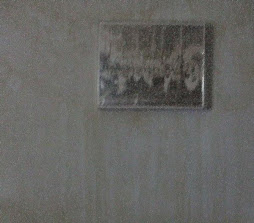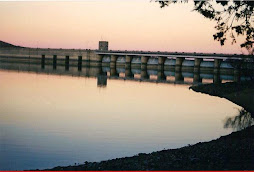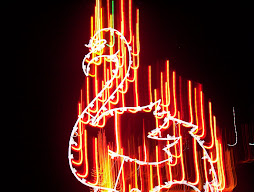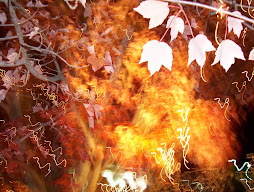Fukushima In Apocalyptic Spiral Downward From Before It's News. Excerpts:
Fukushima may be in an apocalyptic downward spiral.
Forget the corporate-induced media coma that says otherwise ... or nothing at all.
Lethal radiation is spewing unabated. Emission levels could seriously escalate. There is no end in
sight. The potential is many times worse than Chernobyl.
Containing this disaster may be beyond the abilities of Tokyo Electric or the Japanese government.
There is no reason to incur further unnecessary risk. With all needed resources, it's time for the world's best scientists and engineers to take charge.
Even then the outcome is unclear.
For a brief but terrifying overview, consult Dr. Chris Busby as interviewed by RT/TV
David McNeill: Who's telling the truth on the Fukushima meltdown? CNN via Rense. Excerpts:
A string of autopsies -- political, regulatory and technological -- loom over the corpse of the Fukushima Daiichi nuclear power plant. The media, however, has already begun its self-examination and it’s not a pretty picture.
..
One of the more striking aspects of the local media coverage of Fukushima was the missing word -- “meltdown.” It seemed reasonable to speculate, from March 11-15, that this is precisely what happened.
One reason was the repeated news of cesium dispersed in the atmosphere on March 12.
Haruki Madarame, the Chair of the Nuclear Safety Commission now says he concluded very early on that meltdown had happened, and informed the government. Former Washington TBS Bureau Chief Toyohiro Akiyama, who has a farm in Fukushima, made a similar assessment and fled in his car to Gunma.
“There was a blackout in the media of the word,” he says in an interview this month with the Foreign Correspondents’ Club magazine, “No.1 Shimbun.” In April the head of the Atomic Energy Society of Japan, Takashi Sawada, also said that fuel rods in reactors 1 and 3 had melted. Yet, it took over two months for newspapers and TV here to begin using the word. Why?
Japan’s press club system means the big newspapers and TV companies channel and amplify information directly from the government, TEPCO and The Nuclear Industrial Safety Agency. That meant they were admirably disciplined, descriptive, somber and focused on the facts.
They were also discouraged from speculating on what might be going on inside the stricken plant, although many reporters must have privately concluded the worst.
Some will argue that Japanese reporters had a heavy responsibility to avoid creating panic in the world’s most populated metropolis. Twenty-eight million people rushing for the highways, airports and train stations might have caused more deaths than radiation.
But does this responsibility mean simply not exaggerating, or does it also include concealing or delaying information or even outright deception?
As the Nuclear Safety Agency warned on March 12 that metal containers of uranium fuel inside Reactor 1 had probably started melting, University of Tokyo Professor Naoto Sekimura repeatedly popped up on TV to wave away our concerns.
“Only a small part of the fuel may have melted and leaked outside,” he said. Residents near the power station should “stay calm,” because “most of the fuel remains inside the reactor, which has stopped operating and is being cooled.”
How could Professor Sekimura have possibly known what he was saying, and shouldn’t that broadcaster have balanced his (clearly wrong) assessment with an opposite view. Or was that risking panic?
Readers will have to ask themselves how they feel about being kept in the dark “for their own good.”
Dr Iven Mareels - "Engineers Likely Understood Containment Breached Immediately" - "Why is Spent Fuel Still In Reactor 4 SFP?" From Before It's News
Over thirty-five years ago, three engineers working at General Electric resigned from their positions after reviewing the designs for the Mark 1 Reactor, and realizing it was so flawed that disaster was sure to follow. Five of the six reactors at the Fukushima Daiichi Nuclear Power Plant are GE Mark 1s.
In an interview with ABC News, Dale Bridenbaugh, one of the GE engineers who resigned talked about the Mark 1 design. “The problems we identified in 1975 were that, in doing the design of the containment, they did not take into account the dynamic loads that could be experienced with a loss of coolant. The impact loads the containment would receive by this very rapid release of energy could tear the containment apart and create an uncontrolled release.”
Footage of Fukushima No.3 reactor released Video from NHK, via Rense.
Tokyo Electric Power Company has released video footage taken last week of Number 3 reactor at its crippled Fukushima Daiichi nuclear power plant.
The video shows workers wearing protective suits enter the building through a cargo entrance. The roof of the facility was missing with the sky in view because of a hydrogen explosion on March 14th.
Fukushima may be in an apocalyptic downward spiral.
Forget the corporate-induced media coma that says otherwise ... or nothing at all.
Lethal radiation is spewing unabated. Emission levels could seriously escalate. There is no end in
sight. The potential is many times worse than Chernobyl.
Containing this disaster may be beyond the abilities of Tokyo Electric or the Japanese government.
There is no reason to incur further unnecessary risk. With all needed resources, it's time for the world's best scientists and engineers to take charge.
Even then the outcome is unclear.
For a brief but terrifying overview, consult Dr. Chris Busby as interviewed by RT/TV
David McNeill: Who's telling the truth on the Fukushima meltdown? CNN via Rense. Excerpts:
A string of autopsies -- political, regulatory and technological -- loom over the corpse of the Fukushima Daiichi nuclear power plant. The media, however, has already begun its self-examination and it’s not a pretty picture.
..
One of the more striking aspects of the local media coverage of Fukushima was the missing word -- “meltdown.” It seemed reasonable to speculate, from March 11-15, that this is precisely what happened.
One reason was the repeated news of cesium dispersed in the atmosphere on March 12.
Haruki Madarame, the Chair of the Nuclear Safety Commission now says he concluded very early on that meltdown had happened, and informed the government. Former Washington TBS Bureau Chief Toyohiro Akiyama, who has a farm in Fukushima, made a similar assessment and fled in his car to Gunma.
“There was a blackout in the media of the word,” he says in an interview this month with the Foreign Correspondents’ Club magazine, “No.1 Shimbun.” In April the head of the Atomic Energy Society of Japan, Takashi Sawada, also said that fuel rods in reactors 1 and 3 had melted. Yet, it took over two months for newspapers and TV here to begin using the word. Why?
Japan’s press club system means the big newspapers and TV companies channel and amplify information directly from the government, TEPCO and The Nuclear Industrial Safety Agency. That meant they were admirably disciplined, descriptive, somber and focused on the facts.
They were also discouraged from speculating on what might be going on inside the stricken plant, although many reporters must have privately concluded the worst.
Some will argue that Japanese reporters had a heavy responsibility to avoid creating panic in the world’s most populated metropolis. Twenty-eight million people rushing for the highways, airports and train stations might have caused more deaths than radiation.
But does this responsibility mean simply not exaggerating, or does it also include concealing or delaying information or even outright deception?
As the Nuclear Safety Agency warned on March 12 that metal containers of uranium fuel inside Reactor 1 had probably started melting, University of Tokyo Professor Naoto Sekimura repeatedly popped up on TV to wave away our concerns.
“Only a small part of the fuel may have melted and leaked outside,” he said. Residents near the power station should “stay calm,” because “most of the fuel remains inside the reactor, which has stopped operating and is being cooled.”
How could Professor Sekimura have possibly known what he was saying, and shouldn’t that broadcaster have balanced his (clearly wrong) assessment with an opposite view. Or was that risking panic?
Readers will have to ask themselves how they feel about being kept in the dark “for their own good.”
Dr Iven Mareels - "Engineers Likely Understood Containment Breached Immediately" - "Why is Spent Fuel Still In Reactor 4 SFP?" From Before It's News
Over thirty-five years ago, three engineers working at General Electric resigned from their positions after reviewing the designs for the Mark 1 Reactor, and realizing it was so flawed that disaster was sure to follow. Five of the six reactors at the Fukushima Daiichi Nuclear Power Plant are GE Mark 1s.
In an interview with ABC News, Dale Bridenbaugh, one of the GE engineers who resigned talked about the Mark 1 design. “The problems we identified in 1975 were that, in doing the design of the containment, they did not take into account the dynamic loads that could be experienced with a loss of coolant. The impact loads the containment would receive by this very rapid release of energy could tear the containment apart and create an uncontrolled release.”
Footage of Fukushima No.3 reactor released Video from NHK, via Rense.
Tokyo Electric Power Company has released video footage taken last week of Number 3 reactor at its crippled Fukushima Daiichi nuclear power plant.
The video shows workers wearing protective suits enter the building through a cargo entrance. The roof of the facility was missing with the sky in view because of a hydrogen explosion on March 14th.









































































































No comments:
Post a Comment